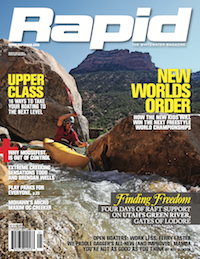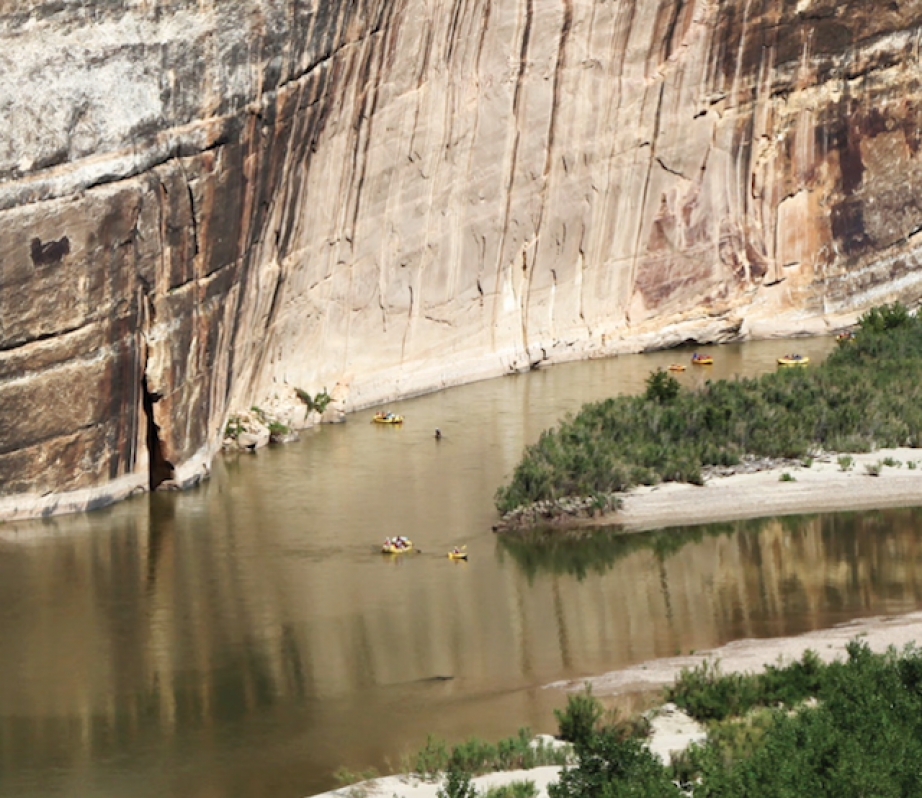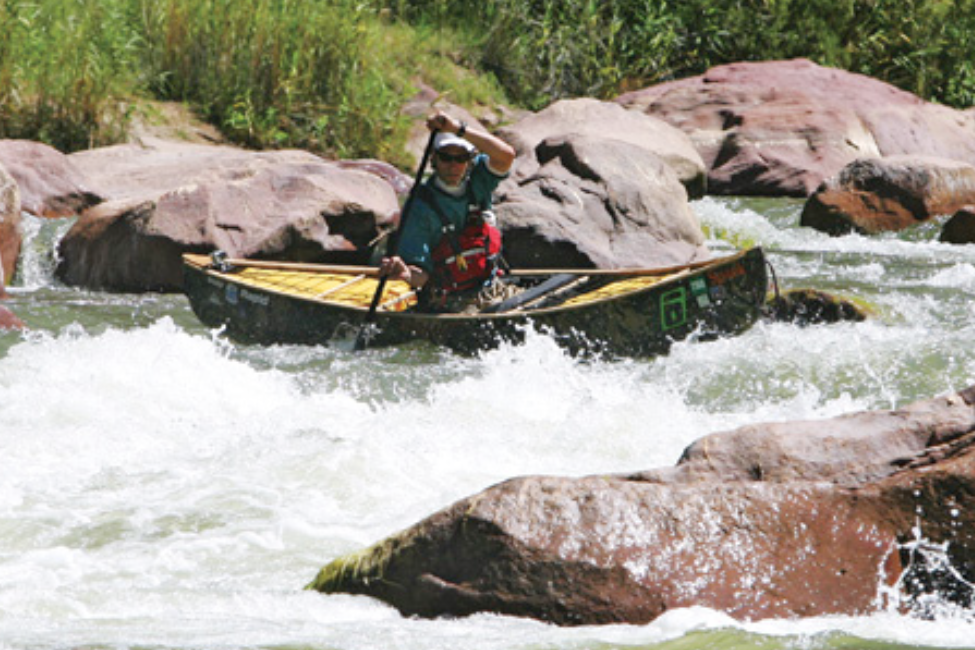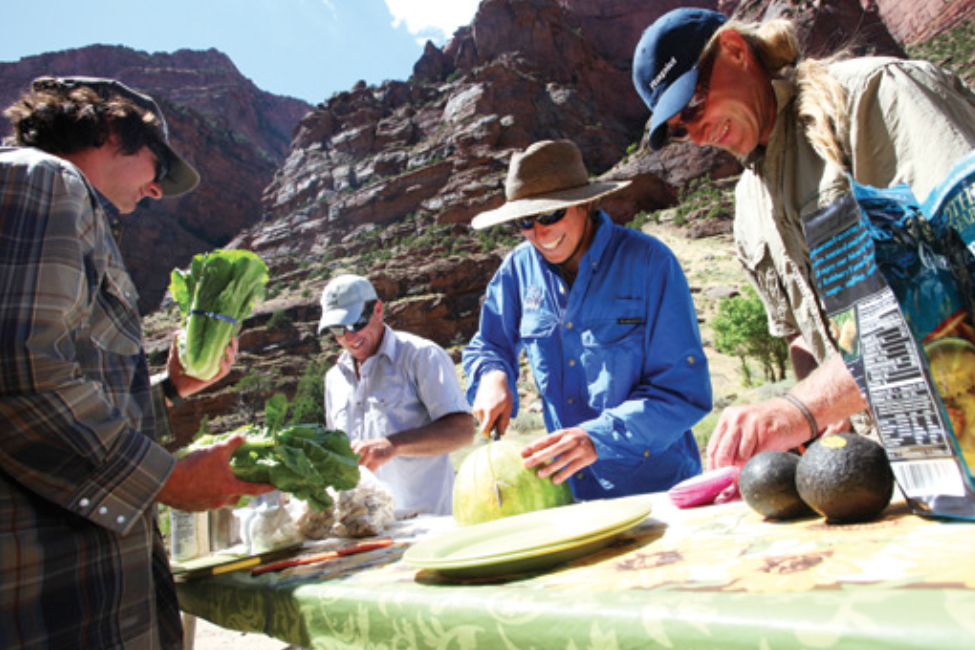I’ve become that guy. I realized it last spring when I turned down a paddling trip to stay home and cut my lawn. It wasn’t turning 40 that did it—nothing that abrupt or clearly defined.
It was a gradual transition from the condition I used to call freedom, to a different condition others call middle age. I know I am not alone.
Middle age is not represented by a particular number of birthdays celebrated. It is not about age at all. Middle age happens when life’s responsibilities, urgent or otherwise, start to dictate the amount of time you have to dedicate to paddling. My desire to paddle is stronger than ever; my time to do so, however, has diminished.
Riding a lawnmower, one lapses into a state of mindfulness. The earmuffs dampen the drone of the Briggs and Stratton engine and slowly there is a separation of body and mind. My foot maintains steady pressure on the hydrostatic pedal and my hands turn the steering wheel in increasingly tighter circles. Meanwhile, my mind drifts to my overflowing bucket list of rivers.
Freedom, I remember, came in bursts between school and seasonal jobs. It came at Christmas holidays and spring break—the large chunks of time before something else important began, time when I used to plan my expeditions and go on road trips to far away places. Freedom meant crossing new rivers off my list. Those large chunks of time are gone.
I’ve wanted to paddle a western canyon river for a long time. I’d heard the Green River in Utah could be run in four days. I reasoned that I had time enough to paddle but not plan. I could travel, but it had to be on my schedule—I couldn’t leave at the drop of a hat, after a phone call from a buddy with an open spot on a permit. I had only a narrow six-day window in August.
O.A.R.S. has been providing guided whitewater rafting trips for more than 40 years.
They’ve won a myriad of travel and tourism awards and are voted best of something by somebody important almost every year. I recognized them from the role they played in the breathtaking IMAX film, Grand Canyon Adventure: River at Risk. They offered to carry our gear in the rafts, allowing us to paddle our own boats. Most importantly, they had a trip down the Green River through the Gates of Lodore leaving their base camp in Vernal, Utah, on just the right day.
O.A.R.S. regular clientele, Steve Markle the director of sales and marketing tells me, are everyday folks. They are people with real jobs and busy lives who probably left home with dirty dishes in the sink. O.A.R.S. has taken their share of celebrities down the river, but Markle says most are groups very much like ours.
Busy lives aside, Dan and I are the exception. Both of us are raft guides. I was pushing rubber and flipping rafts when Russell Schubert, our trip leader, was still in grade school. I’d given his pre-trip safety briefing hundreds of times, almost word for word, albeit on a river 2,000 miles away. He didn’t know this of course and I would have been leery about a journalist and his camera man parachuting into one of my trips. Bruce Lavoie is the group’s logistics guy based in Vernal. When I confirmed my booking, he called me up to feel us out. It felt like we were playing a game of go fish. “Have you paddled the Green?” he asked. Go fish. “Have you paddled any canyon runs?” Go fish. “Are you likely to swim?” Now there’s a loaded question. On summer trips down the Green, O.A.R.S. doesn’t run safety kayakers to pick up rafting clients or open boating magazine editors.
It is a three-hour drive from Vernal to our put-in at a ranger station above the Gates of Lodore. Out the dusty windows of our minibus is ranch country. Junipers, pinion pines and dry grasses look for moisture in the rocky terrain. It is a landscape once loved by outlaws and then western screenwriters. It was a sort of no man’s land straddling the Wyoming, Colorado and Utah state lines. Butch Cassidy and the Sundance Kid would only need to cross the nearest border to escape pursuing lawmen. Just after we crossed from Utah into Colorado, we stopped at Christie’s Liquor. It was only 8:30 a.m. and Christie didn’t open until 11 on Sundays, except for busloads of whitewater rafters on their way to hideout for a few days on the Green River.
Fees and river permits are required for private boating trips on the Green and Yampa rivers within Dinosaur National Monument. In 2011, the National Park Service received 4,780 applications for 300 high-use season launches. Your odds of winning this lottery are better than getting on the Grand Canyon, ranging from a three percent chance in June to 37 percent in late August. All it takes is filling out a one-page form and a 15-dollar non-refundable application fee due the first of February.
“This section of the Green River in Dinosaur National Monument is protected today because of the Antiquities Act of 1906,”
Said Bob Smythe, and he should know. Bob is a retired resource consultant and former presidential advisor from Maryland, along on the trip with his grandson. “The act allowed a president to set aside valuable public land without the bother of getting Congress’ approval.” President Woodrow Wilson used this act in 1915 to establish Dinosaur National Monument to protect paleontologist Earl Douglass’ 350 tons of fossils. We have President Franklin Roosevelt to thank for enlarging the monument in 1938 to include the Green and Yampa River canyons.
Deep in Lodore Canyon, the coffee call was at seven a.m. The guides had been up inflating rafts and prepping breakfast. It was bright but we couldn’t see the sun. Without a compass, I couldn’t get my bearings. Russell said that deep in the canyon, we wouldn’t feel the sun on us until mid-morning.
At breakfast, 24-year-old Charlie pulled out a smoking jacket and fuzzy bunny ears. This was his last trip of the summer guiding on the Green. As far has he knew, he was off to Whistler to help his brother develop a website for dirtbags. “It’s not corporate or anything, it’s about the things you and I’d want to know,” Charlie said. On the third day of our trip, with the desert sun high in the sky, I traded Charlie a bottle of Crown Royal Reserve whisky for a half-tube of Banana Boat SPF30. The desert, I realized, makes you do funny things.
Self-supported kayaking trips are better than diet pills. There’s a 100 percent guarantee you’ll lose weight living on oatmeal, Cliff bars and salty noodle packages. Raft support with O.A.R.S., on the other hand, is better than eating at home. Even in my canoe there is little room for watermelons, steaks, shrimp and fresh eggs. The guides bring propane burners, griddles, folding tables and four galvanized wash buckets—yes the kitchen sink. They don’t bother repacking into smaller bags—food goes directly from the grocery cart into aluminum boxes and coolers built into the raft frames.
Our second day in Lodore is our big push
The day our guides have been waiting for. We paddle Disaster Falls, Harp Falls, Triple Falls, building up to Hell’s Half Mile. Hell’s is the longest and most challenging rapid on the Green River. Dan and I scramble across the bouldery debris to set up cameras. I choose to eddy hop down the right side, ducking behind smooth red boulders that have rumbled down from the opposing ravines and landed conveniently above Lucifer’s, a left-of-center pour over. The more technical but drier open boat line, I figured, is right to left. The rafts run right for the big hit. Dan dances with the devil and boofs the corner of Lucifer’s. We make short work of Hell’s Half Mile that isn’t really a half-mile at all.
Skiers in Utah will remember the winter of 2011 for its record-breaking snowfall. Snowbird had a whopping 775 inches. Just 47 miles upstream of the Lodore Canyon, the third largest dam in America struggled to hold back the spring melt. “The engineers were afraid that if we had a warm, wet spring, the Flaming Gorge Reservoir would spill over the top,” Russell tells us, pointing to historic water-lines stained on the canyon walls. The Green peaked at 8,500 CFS with another 26,700 pounding in from the undammed Yampa River at the confluence, known as Echo Park. “I have not seen the river that high and neither had most of the crew. All the big rapids were almost unrecognizable.” The State Park Service had an astounding 162 permit cancellations. In late August, the Green was still running at 2,400 CFS, more than double its normal flow. “It was a good summer to be a raft guide in Dinosaur,” says Russell. “We may not see water like this for a very long time.”
There is little play, short of catch-on-the-fly surfs
For the most part, the Green is wide and always moving. A swim would be a long one. We moved in a loose rolling cover, like a big game of leapfrog down the river. The biggest hazards are the undercut canyon walls, which we don’t need to be anywhere near. On the Green, the paddling is secondary to the scenery and river life.
On our final day, we stopped for lunch on the sand bar at the entrance to Split Mountain Canyon—the beginning of a seven-mile run of class II–III water and the end of our trip. “You guys are going to love this section,” Russell tells me while making a roast beef on rye sandwich. “You can play just about any thing, just stay off the canyon walls.”
And so, for the first time in four days, we put away the cameras, forgot where we were and we ripped down the last seven miles of the run, 2,000-foot canyon walls and tomorrow’s middle-age obligations be damned.

This article first appeared in the Spring 2012 issue of Rapid Magazine.






